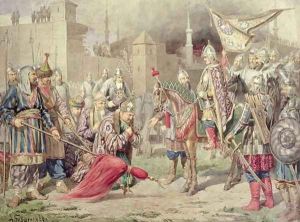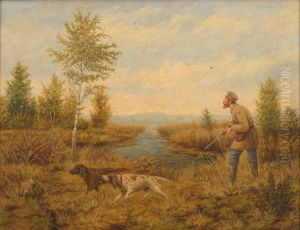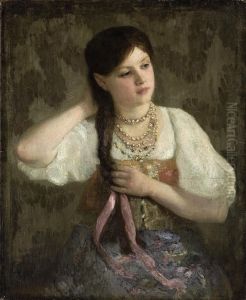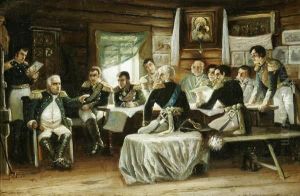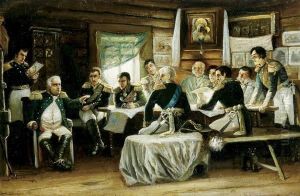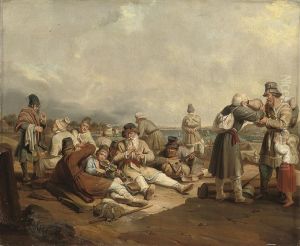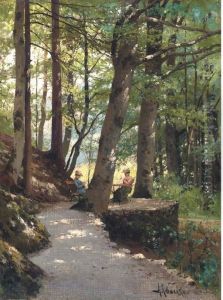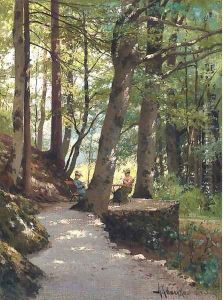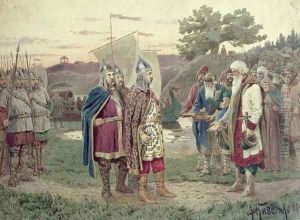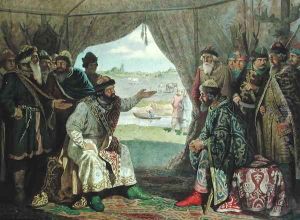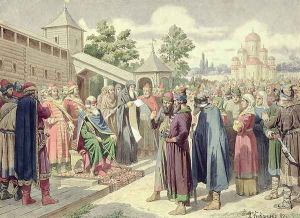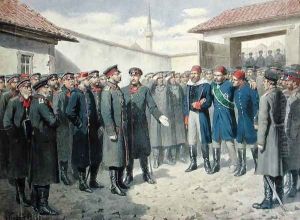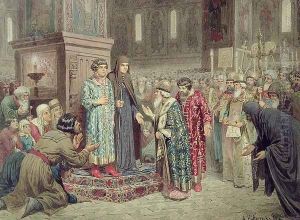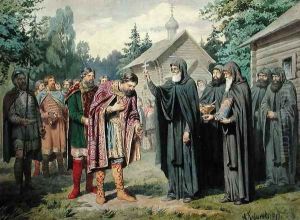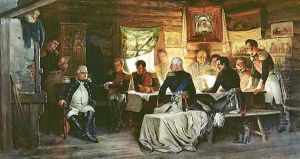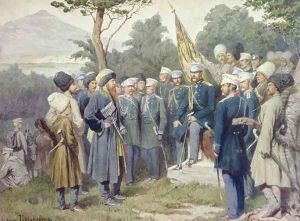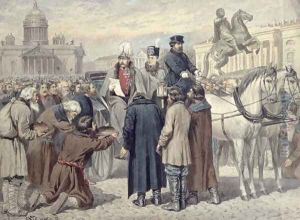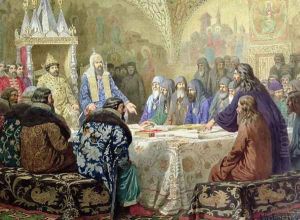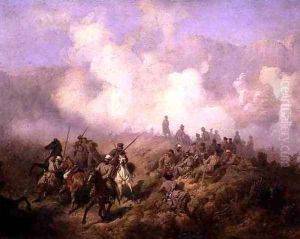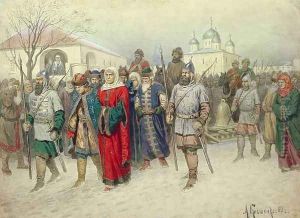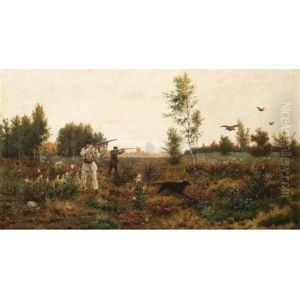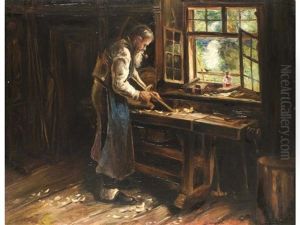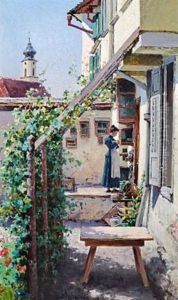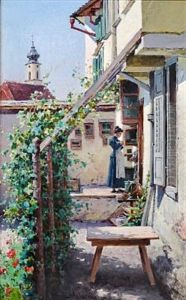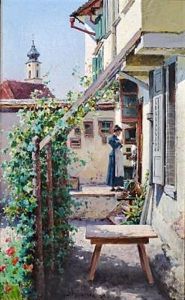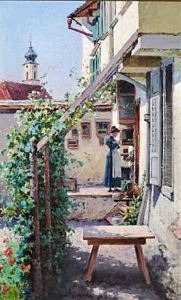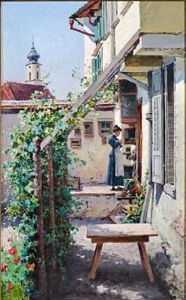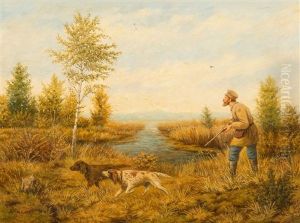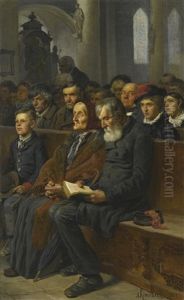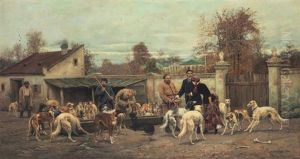Aleksei Danilovich Kivshenko Paintings
Aleksei Danilovich Kivshenko was a Russian painter associated with the Peredvizhniki movement, which sought to break away from the formalism and academic constraints of the official art establishment in Russia. Born on March 26, 1851, in the village of Gady, in the province of Yaroslavl, he showed artistic talent at a young age.
Kivshenko began his formal training at the Moscow School of Painting, Sculpture, and Architecture, and later transferred to the Imperial Academy of Arts in Saint Petersburg. At the Academy, he studied under the guidance of renowned artists such as Pavel Chistyakov, who was known for his rigorous academic training methods. Kivshenko excelled at historical painting, a genre that was highly esteemed in Russia at the time.
After completing his education, Kivshenko traveled extensively, which influenced his artistic style. He visited Germany and France, where he was exposed to the works of Western European masters. Upon returning to Russia, he focused on painting historical scenes, often drawn from Russian history, that were imbued with realism and emotive power.
Kivshenko became an academician of the Imperial Academy in 1881, and his works were widely exhibited and well-received. He was particularly esteemed for his ability to create dramatic compositions and his meticulous attention to historical detail. Among his notable works are 'The Defense of Sevastopol', 'Peter the Great Interrogating the Tsarevich Alexei Petrovich at Peterhof', and 'The Capture of Khan Giray of Crimea'.
In addition to historical paintings, Kivshenko also worked on military themes and was involved in several projects to depict significant moments in Russian military history. His skill in capturing the nuances of military life and the heat of battle earned him commissions from the Russian Imperial family.
Tragically, Kivshenko's life and career were cut short when he died on October 2, 1895, at the age of 44. Despite his relatively short life, his contribution to Russian art was significant, and his works continue to be studied and admired for their artistic merit and historical significance. Kivshenko's legacy is preserved in Russia's museums, including the Tretyakov Gallery and the Russian Museum, where many of his paintings are on display.
